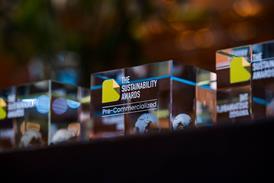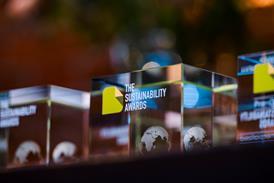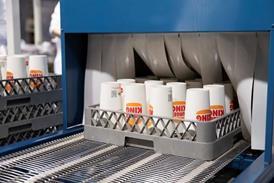
As the Packaging and Packaging Waste Regulation enforces extended producer responsibility across the EU, how will the UK achieve similar results? Read on for a rundown of the UK’s pEPR scheme, including base fees, modulation, and planned developments in the coming years.
Scheme administrator PackUK, also known as PecynUK in Wales, has supplied base fees for pEPR in 2025-2026, with first invoices scheduled for October 2025.
| Material | Rate per tonne (£) |
|---|---|
|
Aluminium |
266 |
|
Fibre-based composite |
461 |
|
Glass |
192 |
|
Paper and card |
196 |
|
Plastic |
423 |
|
Steel |
259 |
|
Wood |
280 |
|
Other |
259 |
Materials in the ‘other’ category include anything not listed above; for example, bamboo, ceramic, copper, cork, hemp, and rubber.
According to the UK Government, nearly all the fees have been lowered compared to the illustrative base fees published last year (in particular, glass is said to have declined by 20%); this is attributed to industry compliance with reporting obligations and ‘extensive’ work between PackUK and regulators to validate said data.
Local authority waste management costs and packaging tonnages reported by producers for 2024 have been used to establish this year’s base fees, with producers, compliance schemes, and local authorities reported to have tested the methodology.
According to PackUK’s Fee Modulation Policy Statement, fee modulation applies to disposal fees for household packaging waste, with large producers held to a ‘traffic light’ system as part of the UK’s Recyclability Assessment Methodology (RAM) system.
Based on how easily a pack can be recycled in existing waste management processes, it will be assigned a colour: red, amber, or green. If it falls under the red rating, it is considered harder to recycle and will therefore incur a higher fee; in the green category, it is considered easier to recycle, and the resultant fee will be lower. Amber ratings will not be subject to modulated fees.
The statement explains that fee modulation will begin for the 2026-2027 financial year, calculated using packaging data collected in 2025. The base fee for each material will be calculated using a household packaging waste tonnage fee and will be considered an amber rating.
Modulation will be calculated by multiplying the household packaging waste disposal fee by the modulation factor. For red RAM packaging materials, this translates to a factor of 1.2 in 2026, 1.6 in 2027, and 2.0 in 2028 – the incremental increase set to reward those already in the green category, while offering a ‘fair and reasonable’ transition period for those requiring extra time to transition out of the red zone.
A caveat has been introduced for medical packaging that falls into the red category due to its regulatory requirements. PackUK allows packaging of this kind to be reported as amber and avoid fee modulation.
Nevertheless, additional funds raised from RAM red-rated packaging will be compiled into a pot of money for redistribution; this will be used to lower the household packaging waste disposal fee for green-rated packaging material, and each tonne of green material across all categories will receive an equal percentage discount on the disposal fee – a move set to disincentivize a switch to less recyclable materials.
The method aims to enforce a ‘polluter pays’ principle, attribute financial responsibility to producers of environmentally harmful packaging, and drive rectification at the source.
After three years, the fee modulation system will be reviewed to evaluate the method’s successes, areas for improvement, and the potential to incorporate additional sustainability factors.
In a Regulatory Position Statement (or Regulatory Decision in Wales), PackUK allows packaging producers to extrapolate recyclability assessment obligations from data collected in the second half of 2025 – however, tonnages for the first half of the year, with flexible and rigid plastics reported separately, must still be provided for the first half of the year.
This approach targets additional flexibility for producers during the transition period, responding to industry concerns that time and resources are required to meet this year’s recyclability assessment obligations.
As part of its interim strategy, PackUK plans to publish a long-term strategy later this year, setting out long-term structures and arrangements. These include developments to UK-wide policy objectives in the coming months, such as the inclusion of reuse and the planned appointment of a CEO, Chief Strategy Officer, and Producer Responsibility Organization.
Altogether, the pEPR is anticipated to drive an investment of over £10 billion (€11,670,450,000) into recycling capability over the next four years, and to fund improvement to nationwide recycling services. It also hopes to support 25,000 jobs across the nation.
A webinar scheduled for Thursday 10th July 2025 will guide viewers through Base Fees, with PackUK inviting interested parties to register their attendance.
This development comes after OPRL announced plans to adapt its Recyclability Assessment Tool in line with the RAM, hoping to help brands make informed choices around packaging design and reduce financial obligations under pEPR.
The Business Coalition for a Global Plastics Treaty has also emphasized the value of EPR in the development of a legally binding Global Plastics Treaty, which failed to reach an agreement as scheduled in December 2024. The next round of negotiations will take place in Geneva from 5th – 14th August 2025.
For other deep dives into upcoming legislation, take a look at our ultimate guides to the Packaging and Packaging Waste Regulation and to other regulatory developments for sustainable packaging in 2025.
If you liked this story, you might also enjoy:
The ultimate guide to the Packaging and Packaging Waste Regulation in 2025
How are the top brands progressing on packaging sustainability?
Everything you need to know about global packaging sustainability regulation in 2025
The key to increasing the use of reusable packaging in supermarkets

















No comments yet